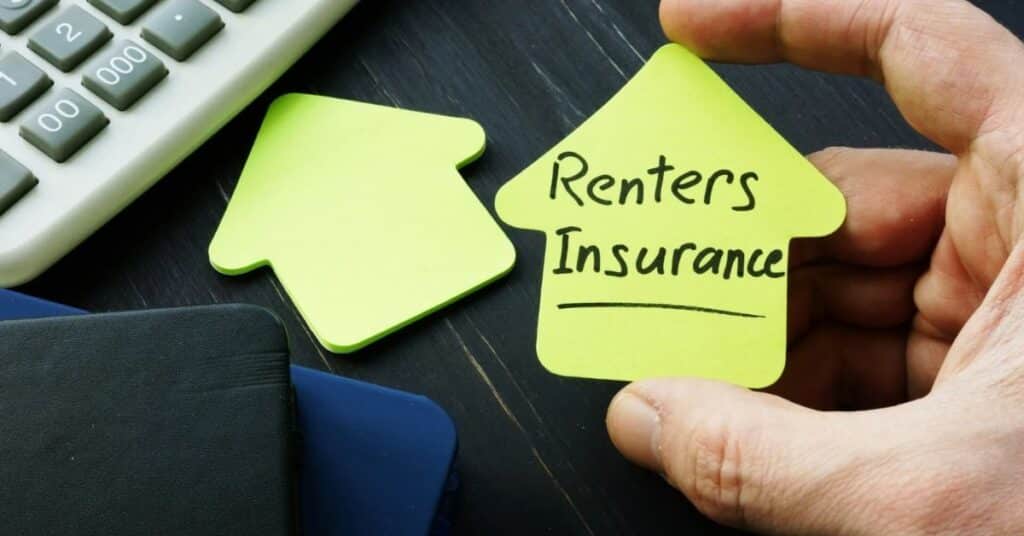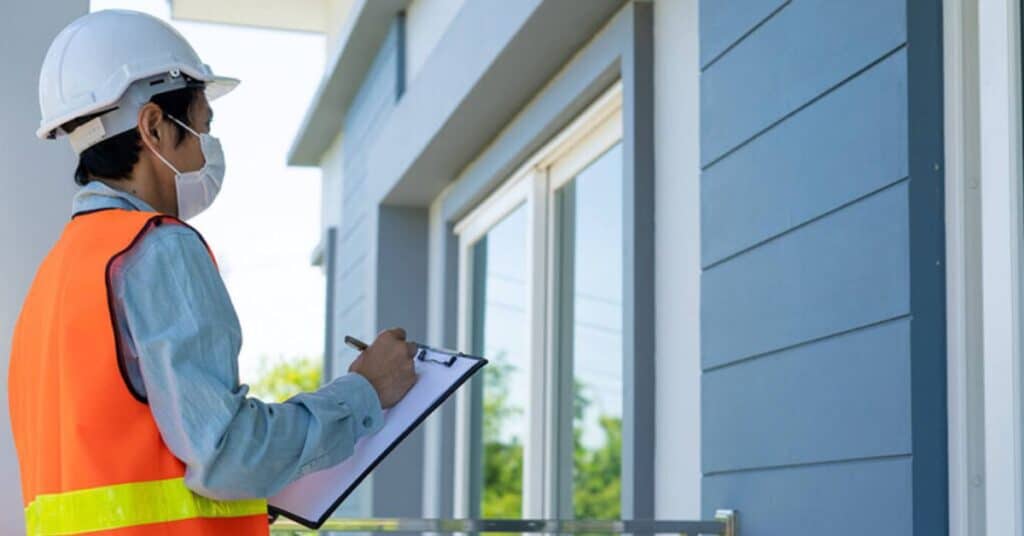Curious about home insurance costs for multi-family homes in Brooklyn, NY? You’re not alone. Understanding insurance expenses is crucial for homeowners in this bustling city.
Let’s explore the factors that influence insurance rates and get a clearer picture of what to expect. Wonder no more! Understanding this expense is crucial for property owners. Let’s break it down together.
What is a multi-family property and what kind of insurance does it need?
Multi-family property is any residential building that contains two or more separate housing units. These properties include buildings with multiple housing units. These range from duplexes to apartment complexes. Tenants lease these units, each occupying their own space.
Insurance for multi-family properties is unique. It needs tailored coverage for diverse risks. Landlord insurance is crucial. It protects against property damage, liability claims, and potential loss of rental income. Insurance for multi-family properties covers the entire building.
This includes the structure, common areas, and attached structures like garages. Landlord insurance is crucial, even if the owner lives on-site. It protects against various risks, ensuring financial security and peace of mind. The number of units in your building is a significant factor.
For properties with a few units, ensure coverage for the entire property. If landlord insurance is necessary if any part is rented out. Larger properties, like major apartment complexes, require comprehensive business insurance.
This policy should cater to specific business needs. Before discussing coverage options, let’s clarify the property type. This article focuses on insurance for smaller multi-family properties, typically with two to four units.
Types of Insurance Policies For Multi-Family Property

Multi-family properties require specialized insurance policies. These policies address the unique risks associated with renting to multiple tenants. Common types include property insurance, liability insurance, and business income insurance.
Let’s explore the key insurance options tailored to address the specific needs of multi-family rental properties.
General Liability Policy
A general liability policy provides broad protection against potential lawsuits and claims for bodily injury or property damage.
Coverage Details: It typically covers legal fees, medical expenses, and damages resulting from accidents that occur on the insured property.
Key Features: This policy is essential for landlords, as it protects against liability risks associated with tenants and visitors.
Importance for Landlords: Having a general liability policy ensures financial security and peace of mind for landlords in case of unforeseen accidents or legal disputes.
Property insurance policy
Property insurance covers damages to the physical structure of your property. There are two types of property insurance:
Structure-wise Insurance: If your property has multiple structures, each is insured separately. It costs more but you get better coverage for all units and you do not have to worry about things like mold.
Whole Property Policy: The insurance covers your property as a whole regardless of the number of units/buildings it has. In both policies, the actual face value of the policy will entirely depend on the size and value of the property.
In case of damages to your property due to fire or natural events, the insurance reimburses you for the damages. Contact us to find out more about property insurance, and the best coverage for you!
Umbrella Liability Coverage: Umbrella Liability Coverage provides additional coverage and covers what other policies do not cover. It ensures that there are no gaps in your other insurance coverage.
Rental Income Insurance: Rental Income Insurance compensates the owner in case there are interruptions of normal
Loss of Rental Income Coverage: Loss of Rental Income Coverage is crucial for landlords. It provides compensation for lost rental income if your property becomes uninhabitable due to covered perils, such as fire or natural disasters.
This coverage ensures that you can continue to meet financial obligations even during periods of property unavailability.
Tenant Discrimination Liability Insurance: Tenant Discrimination Liability Insurance safeguards landlords from discrimination claims. It covers legal fees and settlements for allegations of discrimination. This coverage reduces the risks of legal conflicts and discrimination claims for landlords.
Read This Blog: CAPITAL GAINS TAXES IN A FLORIDA HOME SALE – A 2024 GUIDE
Cost of Landlord Insurance in Brooklyn
Landlord insurance costs vary depending on several factors, including the property’s type and history of losses. Websites may give estimates, but these don’t consider mixed-use buildings or other owner scenarios.
Before providing a quote, insurers examine the building’s loss history for the past 3-5 years. They also consider whether the property is mixed-use or purely residential, along with the number of tenants.
The square footage of the property influences the average cost of landlord insurance, typically ranging from $250 to $350 per square foot for replacement costs. However, factors like high-claim commercial tenants or irregularities in loss history can affect premiums.
Landlord insurance generally costs more due to larger structures and increased liability risks. Properties with short-term rentals may face higher premiums due to potential tenant neglect. Until the building passes inspection, these quotes remain estimates.
What is Included in Your Insurance Coverage?

Your insurance coverage typically includes protection for both the physical structures of your property and liability. Opting for comprehensive policies ensures full protection for your business.
Look for coverage that encompasses property damage, loss of rental income, personal property, and medical payments. This comprehensive approach safeguards your investment from various risks.
Comprehensive insurance policies are essential to ensure your business is adequately protected against potential losses and liabilities. Ensure your coverage includes all necessary protections for peace of mind.
Dwelling Coverage or Property Damage
Dwelling coverage or property damage insurance protects the physical structure of your property. It covers repairs or replacement costs if your property is damaged by covered perils. This coverage is essential to ensure your property is adequately protected from unforeseen events.
Coverage for all risks including natural disasters, water damage, earthquake, fire, irresponsible or vandalism. This policy is the most expensive but also highly beneficial for you.
Loss of Income
Loss of income insurance compensates landlords for lost rental income. It kicks in if your property becomes uninhabitable due to covered perils. This coverage ensures you continue to receive income even if your property is temporarily unrentable.
Personal Property
This is for any personal property used such as a security camera. Personal property insurance covers belongings inside your rental property.
It protects items like furniture, appliances, and electronics from damage or theft. This coverage ensures that your personal belongings are protected in case of unexpected events.
Medical Payments
Medical payments coverage handles medical expenses if someone is injured on your property. It covers costs like ambulance fees and hospital bills. This coverage provides financial assistance for injuries that occur on your rental property.
Liability Protection
Liability protection covers legal expenses if someone is injured on your property. It also helps with property damage or injuries caused by you or your family members. This coverage ensures you’re financially protected from potential lawsuits or claims.
Property insurance
Property insurance covers damages to the physical structures of your property. This coverage pays for repairs or replacement if it is damaged or destroyed by a covered peril like fire, smoke, storm, hail, or vandalism.
For instance, if a tenant starts a grease fire and damages the kitchen, your insurance would cover the cost of repairing or replacing the damaged cabinets, appliances, and countertops.
It provides protection against various risks such as natural disasters, water damage, and vandalism. This policy is crucial for safeguarding your investment in case of unforeseen events.
Business income insurance
Business income insurance protects your rental income if your property becomes uninhabitable. It provides coverage for lost rental income due to covered perils like fire or natural disasters. For instance, if a fire damages your property and forces tenants to move out, this insurance compensates you for the lost rental income. It helps landlords navigate financial challenges during periods of property disruption.
Flood insurance
Flood insurance is vital for properties in flood-prone areas. It covers damages from floods, not usually included in standard policies. This specialized coverage protects against flood-related losses like structural damage and property destruction. Property owners in flood zones benefit greatly from flood insurance, safeguarding their investments and reducing financial risks.
Water or sewer backup coverage
Water or sewer backup coverage safeguards your property from damage caused by these incidents. It includes repairing or replacing damaged items and property. This coverage is vital, especially in urban areas prone to sewer backups. It offers financial protection in case of water or sewer backup incidents.
Equipment breakdown coverage
Equipment breakdown coverage safeguards against repair or replacement expenses for damaged property equipment. This encompasses appliances, HVAC systems, and electrical wiring.
Landlords, particularly those with older properties, find this coverage indispensable. It provides financial security in the event of unforeseen equipment malfunctions.
Passing Inspection and Saving on Coverage

To secure landlord insurance, your building must meet certain standards. Failing to do so could lead to higher premiums or difficulty in obtaining coverage.
Here are some key areas that inspectors focus on during inspections:
Breaker boxes: Replace any FPE Stab-Lok breaker boxes, especially if you have multiple ones.
Sidewalk conditions: Ensure sidewalks are in good condition for tenant and pedestrian safety.
Handrails: Install handrails where there are three or more steps on the property.
AC brackets: Add safety brackets to windows with tenant-used air conditioning units.
Emergency lighting: Buildings with four floors or more require emergency lighting and illuminated exit signs in hallways.
Consult your insurance agent for additional advice and coverage options. Consider riders like flood insurance, guaranteed income insurance, and emergency coverage.
Before investing in a property, understand its insurance requirements. Insurance advisors can assist you in navigating these requirements and finding the right coverage for your needs.
Protecting your multi-family property in New York

Protecting your multi-family property in New York is crucial due to various risks involved. From liability issues to potential loss of rental income, the stakes are high.
Having the appropriate insurance coverage is vital to safeguard your investment. Consider consulting an independent insurance broker to navigate the complex insurance options and secure the best coverage at competitive rates.
Frequently Asked Questions
How much is homeowners insurance in Brooklyn NY?
Homeowners insurance in Brooklyn, NY varies depending on factors like the property’s value, location, and coverage needs.
How much is the average home insurance in NY?
The average home insurance cost in NY depends on factors such as the property’s location, size, and coverage level.
How much does the average American pay for home insurance?
The average American pays around $1,200 annually for home insurance, but costs vary based on location and coverage needs.
Who has the most expensive home insurance?
States prone to natural disasters like Florida and Louisiana tend to have the most expensive home insurance due to higher risks.
Final Thought’s
Securing proper insurance for your multi-family property in New York is crucial. With risks ranging from liability issues to potential rental income loss, comprehensive coverage is essential. Consulting with an independent insurance broker can simplify the process and help you find the best coverage at competitive rates.
Prioritize protecting your investment by investing in comprehensive insurance tailored to your property’s needs. With the right coverage in place, you can safeguard your multi-family property and ensure long-term financial security.







